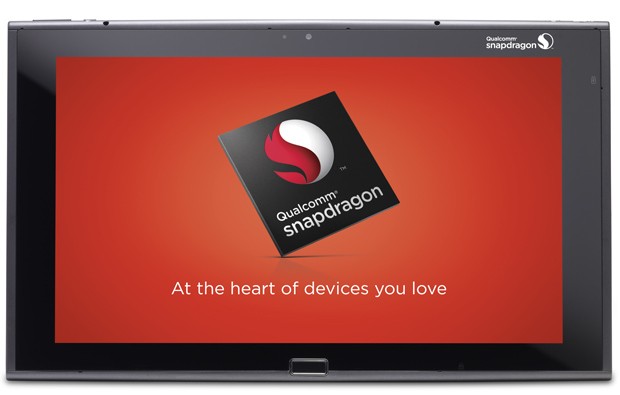The mobile processor market is fiercely competitive, especially in emerging areas where cost, and potentially local supply, is paramount.
Over the past couple of years, we’ve seen several homegrown suppliers emerge, particularly in China (e.g., MediaTek, Spreadtrum). So, can Qualcomm, the pioneering and largest mobile chip supplier, fight back and stem the tide of increasing design wins by these interlopers?
Deploying a reference design strategy
Qualcomm is now utilizing a tactic successfully used by Intel in the PC wars (and Intel is going this route again in mobile with increasing success). Qualcomm is coupling its chips will all the peripheral software and hardware necessary for a complete design — not only with its own chips, but also through relationships with components suppliers for screens, memory, peripheral chips (e.g., sensors), and the like. Companies that want to market a phone only need to make a few tweaks to the reference design to make it uniquely their own.
[VentureBeat will be exploring growth and marketing in mobile at our Mobile Summit on April 14-15. Request an invite here!]
By working with the full ecosystem of suppliers and components from base-level operating systems and software, all the way up to displays and mechanical components, Qualcomm has dramatically reduced both the cost and effort needed to get a phone to market. That’s not to mention reducing the design and test time from years down to a few months.
Qualcomm is also working with carriers to “pre-approve” the designs to reduce testing and time to market even further. This is critical for many of the would-be players in emerging markets where resources are constrained and time to market is a key success factor.
While many of the larger vendors like Samsung and Nokia don’t require this level of support, reference designs give emerging market vendors major incentives to take advantage of this ecosystem. Further, it gives OEMs (original equipment manufacturers like Foxconn) the ability to dramatically reduce their costs for smaller, more nimble and changing vendors in emerging markets.
For Qualcomm, it offers the ability to create a high volume for its components even though this may be spread across multiple lower volume players.
But, at end of day, the cost for manufacturing materials is still critical in many markets, especially at entry level. So even with Qualcomm’s reference design, if the core chips are not competitively priced, emerging chip vendors will undercut the value of the reference platforms (this is less of an issue the higher in the market the phones go with premium devices — probably little to no issue at all). This is a repeat of the PC chip wars, where AMD chose a strategy to undercut Intel on price, with great success at the lower end price sensitive part of the market.
Other mobile chip suppliers, like Nvidia, have tried this approach too. But with less resources to apply, they can’t deliver as broad a reference deign stable of products as Qualcomm can. In fact, Qualcomm’s reference designs started at the low end (Snapdragon 200) but are quickly moving up the stack with reference designs for higher end Snapdragon 400 and 600 too. This is based on a desire by many emerging market players to have a full spectrum of entry level to premium devices for sale.
The bottom line
In a highly competitive world for mobile chips, any advantage can make the difference between a design win and a failure. Although it’s not the lowest cost chip supplier, Qualcomm can largely negate that disadvantage by saving mobile device vendors significant cost in design and sourcing, as well as dramatically reduce the time to market and barrier to entry associated with new designs.
Concentrating on differentiation, these vendors can apply resources to unique design in hardware and software interfaces, rather than spend many cycles in core level design. This will stimulate the market and provide the ability for many new companies to enter the space, ultimately raising the volumes for Qualcomm and its chips, which of course is its goal.
This is a winning strategy only available to those chip suppliers with substantial resources, and will propel Qualcomm into many designs it would not have won on price alone.
Jack Gold is the founder and principal analyst at J.Gold Associates, based in Northborough, Mass. He covers the many aspects of business and consumer computing and emerging technologies.
VentureBeat's mission is to be a digital town square for technical decision-makers to gain knowledge about transformative enterprise technology and transact. Learn More

